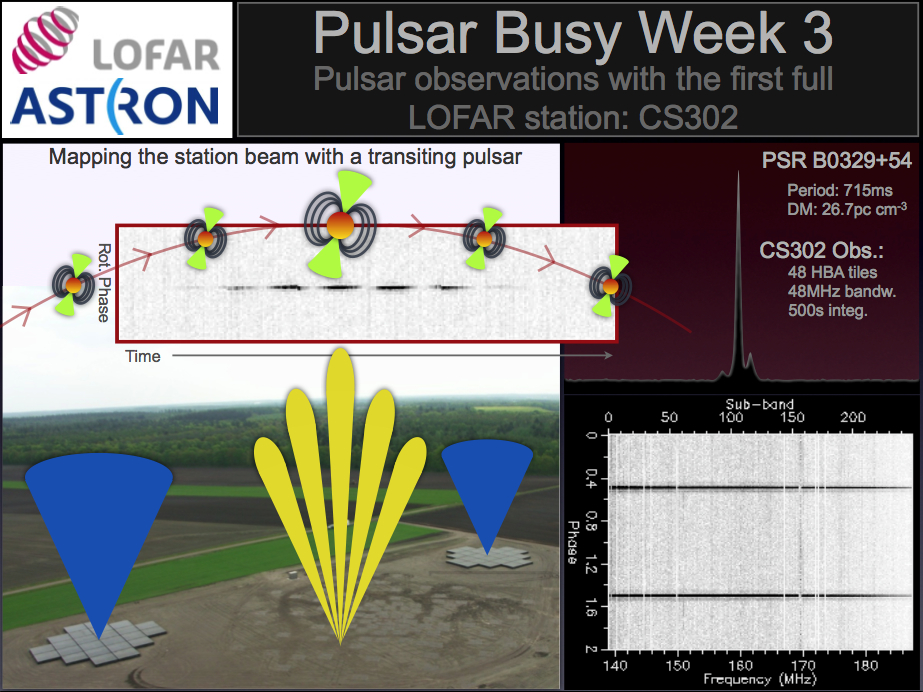Daily Image
19-06-2009Pulsar Busy Week 3: Pulsar observations with the first full LOFAR station, CS302
| Submitter: | LOFAR Pulsar Working Group and ASTRON High-Performance Computing Group |
| Description: | The first week of June, 2009 was the third in a series of "Pulsar Busy Weeks" (PBWs), which have the aim of bringing technicians, software developers, and astronomers together to prepare the tied-array modes of LOFAR. The primary goal of PBW3 was to make the first pulsar observations with the first fully completed LOFAR station, CS302. This was successful and CS302 now gives us 12 times more instantaneous sensitivity in the high-band (100-240MHz) than was available with the LOFAR test station CS010c. This opens up a whole new range of system tests using astronomical sources, simply because so many more sources are now readily visible. To illustrate the already impressive sensitivity of a single LOFAR station, see the cumulative (sum of many pulses) pulse profile from a 500-s observation of the pulsar B0329+54 (right, top). This observation was made using the two "ears" of CS302, which together contain 48 HBA tiles (left, bottom). It is now also possible to record 248 subbands, equivalent to 48MHz of bandwidth (right, bottom). This also provides a significant increase in sensitivity compared with what was available before and nicely illustrates that interference, though present, is manageable. Across the entire 48-MHz band, only a small fraction of subbands were masked and removed from the analysis (left, bottom). Note that when LOFAR20 is available, we should be able to achieve comparable signal-to-noise for each _individual_ pulse from this pulsar! Combining the two HBA "ears" of a core station gives a station beam with many fans. The blue and yellow cones schematically show the single ear and combined station beam respectively. To map this station beam, we performed an observation in which all the tiles pointed towards the zenith and did not track. Allowing the pulsar B0329+54 to transit through the beam - this pulsar fortuitously passes through the zenith in the Netherlands - we were able to illustrate the "fringes" created by combining the two HBA ears of CS302 (inset figure). We look forward to the next PBW, where the goal will likely be to combine two or more full LOFAR stations to create multiple tied-array beams on the sky. |
| Copyright: | Hessels/ASTRON |
| Tweet |  |
